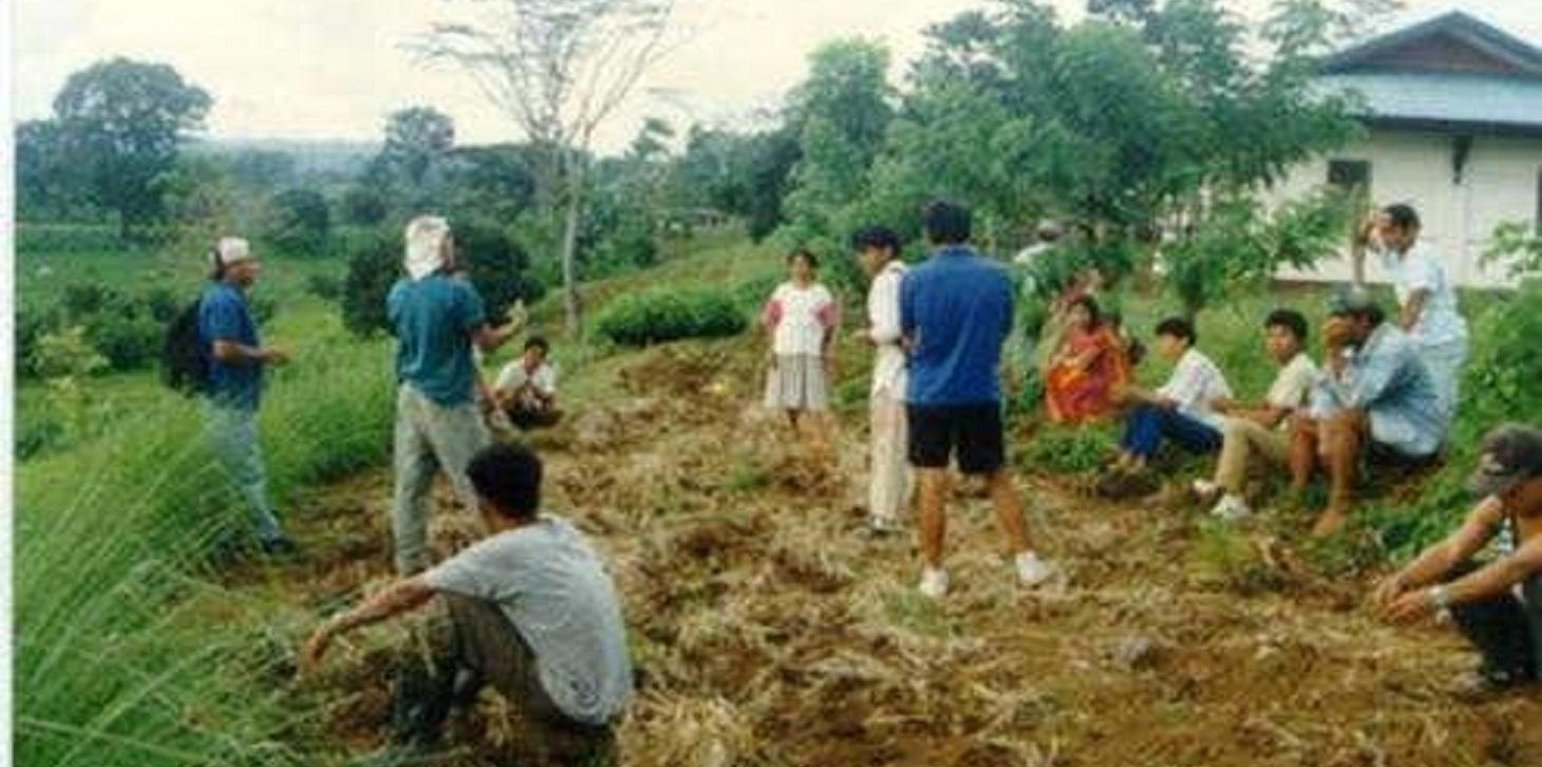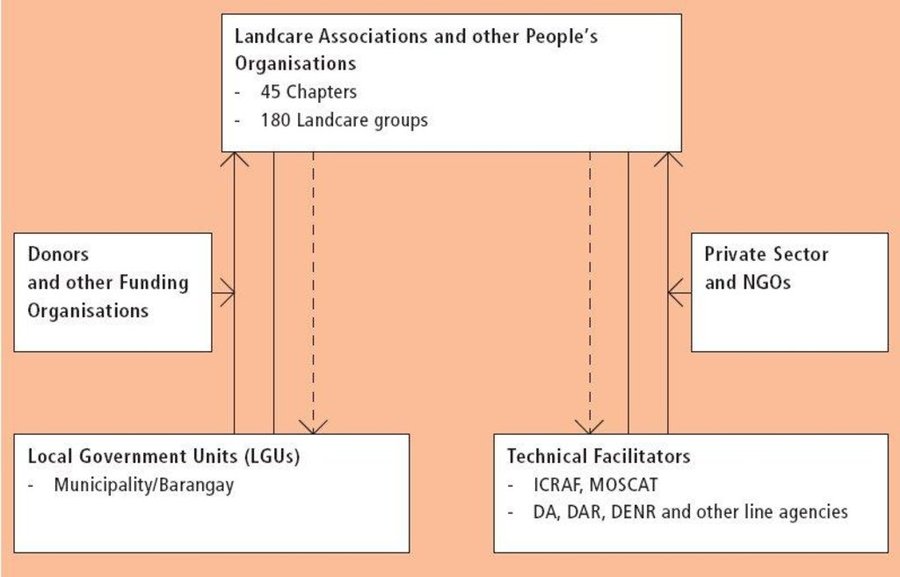LANDCARE - Claveria Landcare Association (CLCA)
(الفيليبين)
الوصف
Associations that help diffuse, at low cost, soil and water conservation technologies among upland farmers to generate income while conserving natural resources.
In parts of the Philippines, farmers who are interested in learning and sharing knowledge about sustainable land management and new SWC measures organise themselves into the so-called 'Landcare' associations. These self-help groups are a vehicle for knowledge exchange, training and dissemination of SWC technologies. A main objective is the empowerment of farmers' groups in their efforts to improve their livelihoods as well as the environment. Landcare has three components and aims at strengthening collaboration between those: (1) grassroot farmers' organisations (Landcare organisations); (2) technical facilitators, for example the World Agroforestry Centre (formerly the International Centre for Research in Agroforestry: ICRAF) and government and academic agencies and (3) Local Government Units (LGUs). The Landcare associations are structured as municipal groups, village groups (barangay level or affiliate peoples' organisations), and village sub-groups (sitio or purok level). This ensures effective dissemination of technologies from the municipal level down to the smallest village. To give the associations a legal status, they are registered with the Securities and Exchange Commission (SEC). Landcare associations conduct regular monthly meetings to promote exchange of information, ideas, and experience, thus promoting spread of SWC technologies. Extension service is carried out through the Local Government Units, which allocate 20% of their development funds for Landcare related activities such as meetings, training and visits, and nursery establishment. Farmers organised in Landcare groups have better access to technical and financial support for SWC activities from LGUs and other technical facilitators.
LGUs also enact local laws to encourage adoption of SWC technologies, such as giving tax incentives, and Landcare members are given priority access to programmes and financial assistance. Landcare acts as a guarantor against loans. The facilitating agencies provide technical assistance, and also help create an environment of dynamism among Landcare groups. A link is created between Landcare associations and these service providers. Landcare enhances sharing of labour, builds camaraderie, and encourages group decisions on matters relating to SWC. The approach is spreading rapidly: from the original one association with 25 members in 1996, this increased to 45 groups with over 4,000 members by 1999.
الموقع
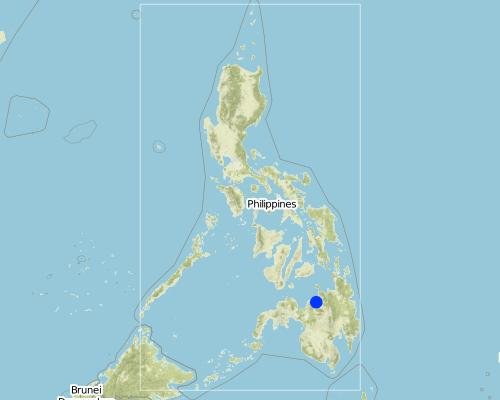
الموقع: Misamis Oriental, الفيليبين
المرجع الجغرافي للمواقع المختارة
تاريخ البدء: 1996
سنة الإنهاء: غير متاح
نوع النهج
-
تقليدي/أصلي
-
مبادرة محلية حديثة/مبتكرة
-
قائم على مشروع/برنامج
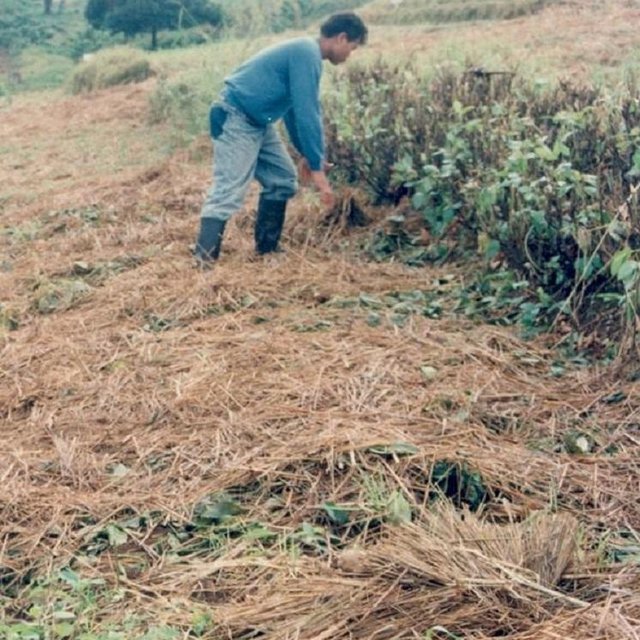
-
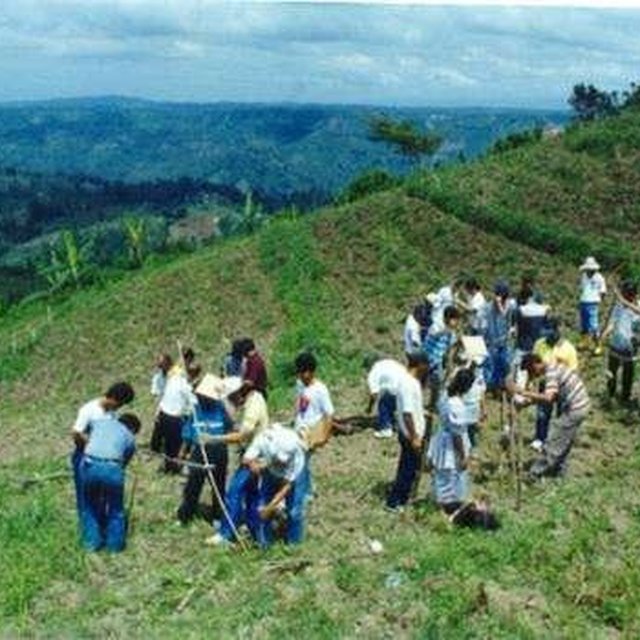
-
غايات النهج والبيئة المواتية
الغايات/الأهداف الرئيسية للنهج
- organise farmers with common concerns, problems, needs and aspirations into self help groups.
- establish farmers' groups as conduits for financial and other support for SWC technologies.
- empower farmers' groups in their efforts to improve their livelihoods as well as the environment.
- strengthen working linkages between farmers and the LGU, NGOs and technical facilitators.
- promote sharing of new technologies, information, ideas and experiences about sustainable agriculture and natural resources management among Landcare groups and members.
- facilitate collective efforts in activities - which cannot be carried out at household level (eg communal nurseries).
- assist in the marketing of agroforestry-derived products of the members, and to develop links to studies on agroforestry based farming
الشروط التي تمكن من تنفيذ التقنية/التقنيات المطبقة في إطار النهج
-
المعايير والقيم الاجتماعية /الثقافية/ الدينية: Members of Landcare are recommended to lending institutions for production loans.
-
الإطار القانوني (حيازة الأراضي، وحقوق استخدام الأراضي والمياه): Speed up the land reclassification and land registration program of the Department of Environment and Natural Resources (DENR).
-
المعرفة حول الإدارة المستدامة للأراضي، والوصول إلى الدعم الفني: farmers training and cross visits to nearby farmers.
الظروف التي تعيق تنفيذ التقنية/التقنيات المطبقة في إطار النهج
مشاركة وأدوار الأطراف المعنية
الأطراف المعنية بالنهج وأدوارها
| ما هي الجهات المعنية / الكيانات المنفذة التي شاركت في النهج؟ |
حدد الأطراف المعنيين |
وصف أدوار الأطراف المعنية |
| مستخدمو الأراضي المحليون/المجتمعات المحلية |
land user driven (bottom-up). Spontaneous adoption with technical assistance from donors |
Working land users were mainly men (Men do the main job in the field. Women do home-related agricultural activities e.g. corn shelling. Men do the heavier works (plowing, harrowing). Women in light |
| متخصصون في الإدارة المستدامة للأراضي / مستشارون زراعيون |
ICRAF facilitated the organisation of farmers. Specialists established the linkage between Landcare and LGUs/NGOs. |
technical assistance from donors |
| الحكومة المحلية |
Local government units (LGU's) |
|
| الحكومة الوطنية (المخططون، صانعو القرار) |
Department of Agriculture |
|
انخراط مستخدمي الأراضي المحليين/المجتمعات المحلية في المراحل المختلفة للنهج
غير موجود
سلبي
الدعم الخارجي
تفاعلي
التعبئة الذاتية
المبادرة/التحفيز
public meetings, rapid/participatory rural appraisal, workshops/ seminars
التخطيط
public meetings, rapid/participatory rural appraisal, workshops/ seminars
التنفيذ
organisation of major and minor activities: coordination of casual labour
الرصد/التقييم
measurements/observations, public meetings, interviews/ questionnaires
research
on-farm research supported by LGU, academics, ICRAF
مخطط التدفق
The diagram demonstrates the collaboration, complementarity, interdependence and synergism between the actors.
Explanations: ->Support (technical, financial, policy) --->Demands, requests, feedback IC
اتخاذ القرار بشأن اختيار تقنية الإدارة المستدامة للأراضي
وقد تم اتخاذ القرارات من قبل
-
مستخدمو الأراضي وحدهم (المبادرة الذاتية)
-
مستخدمو الأراضي بشكل أساسي، بدعم من متخصصي الإدارة المستدامة للأراضي
-
جميع الجهات الفاعلة ذات الصلة، كجزء من نهج تشاركي
-
متخصصون في الإدارة المستدامة للأراضي بشكل أساسي، بعد التشاور مع مستخدمي الأراضي
-
متخصصون في الإدارة المستدامة للأراضي بمفردهم
-
السياسيون / القادة
تم اتخاذ القرارات بناء على
-
تقييم المعرفة الموثقة جيدًا بشأن الإدارة المستدامة للأراضي(اتخاذ القرارات القائمة على الأدلة)
-
نتائج البحوث
-
خبرة وآراء شخصية(غير موثقة)
الدعم الفني وبناء القدرات وإدارة المعرفة
شكلت الأنشطة أو الخدمات التالية جزءًا من النهج
-
بناء القدرات/التدريب
-
خدمة استشارية
-
تعزيز المؤسسات (التطوير التنظيمي)
-
الرصد والتقييم
-
البحوث
بناء القدرات/التدريب
تم تقديم التدريب للأطراف المعنية التالية
-
مستخدمو الأراضي
-
موظفون ميدانيون/ مستشارون
شكل التدريب
-
في العمل
-
من مزارع إلى مزارع
-
مناطق العرض
-
اجتماعات عامة
-
دورات
خدمة استشارية
تم تقديم الخدمة الاستشارية
-
في حقول مستخدمي الأراضي
-
في مراكز دائمة
تعزيز المؤسسات
تم تعزيز/إنشاء المؤسسات
-
لا
-
نعم، قليلا
-
نعم، باعتدال
-
نعم، إلى حد كبير
صف المؤسسة والأدوار والمسؤوليات والأعضاء وما إلى ذلك.
نوع الدعم
-
مالي
-
بناء القدرات/التدريب
-
معدات
مزيد من التفاصيل
الرصد والتقييم
البحوث
تناول البحث المواضيع التالية
-
علم الاجتماع
-
الاقتصاد / التسويق
-
علم الايكولوجيا
-
تكنولوجيا
التمويل والدعم المادي الخارجي
الميزانية السنوية بالدولار الأمريكي لمكون الإدارة المستدامة للأراضي
-
< 2000
-
10,0000-2,000
-
100,000-10,000
-
1,000000-100،000
-
> 1,000,000
Precise annual budget: غير متاح
تم تقديم الخدمات أو الحوافز التالية لمستخدمي الأراضي
-
الدعم المالي/المادي المقدم لمستخدمي الأراضي
-
إعانات لمدخلات محددة
-
الائتمان
-
حوافز أو وسائل أخرى
seedlings
tree & coffee seedlings
العمل من قبل مستخدمي الأراضي كان
-
تطوعي
-
الغذاء مقابل العمل
-
مدفوع نقدا
-
مقابل دعم مادي آخر
تحليل الأثر والتصريحات الختامية
آثار النهج
لا
نعم، قليلا
نعم، باعتدال
نعم، إلى حد كبير
هل ساعد النهج مستخدمي الأراضي على تنفيذ وصيانة تقنيات الإدارة المستدامة للأراضي؟
The approach has greatly helped land users in the implementation of soil and water management technologies. Farmers now adopt 'natural vegetative strips' (NVS). Large farms (> 3 ha) have generally evolved into commercial production of tree crops (coffee) and trees (timber).
هل أدى النهج إلى تحسن في مسائل حيازة الأراضي / حقوق المستخدمين التي أعاقت تنفيذ تقنيات الإدارة المستدامة للأراضي؟
Land tenure is still an important factor in adoption of SWC technology. Providing simple technology in establishment and maintenance enhance adoption. Landcare groups exist where tenants are members. They adopt SWC technology.
Did other land users / projects adopt the Approach?
Many other NGOs, local government units (LGUs) and line agencies have adopted - and further adapted - the Landcare approach in their respective areas. The approach has been proven effective and it is now being looked upon as a model for the implementation of SWC and other related activities, particularly in Mindanao.
المحفز الرئيسي لقيام مستخدمي الأراضي بتنفيذ الإدارة المستدامة للأراضي
-
زيادة الإنتاج
-
زيادة الربح (القدرة)، وتحسين نسبة التكلفة إلى العائد
-
الحد من تدهور الأراضي
-
الحد من مخاطر الكوارث
-
انخفاض عبء العمل
-
المدفوعات/ الإعانات
-
القواعد واللوائح (الغرامات) / الإنفاذ
-
الوجاهة والضغط الاجتماعي/التماسك الاجتماعي
-
الانتماء إلى حركة/ مشروع/ مجموعة/ شبكات
-
الوعي البيئي
-
العادات والمعتقدات والأخلاق
-
تعزيز المعرفة والمهارات في مجال الإدارة المستدامة للأراضي
-
تحسينات جماليية
-
التخفيف من حدة الصراع
استدامة أنشطة النهج
هل يمكن لمستخدمي الأراضي الحفاظ على استدامة ما تم تنفيذه من خلال النهج (بدون دعم خارجي)؟
Landcare has become an integral part of civil organisation. Landcare is a triangulation of grassroot organizations (farmers), local government units (LGU's), and technical failitators. The financial resource required for this approach are imbedded in the regular budget of municipal or barangay. The LGU's (politicians consider Landcare groups as political machinery and voting blocks. If they
الاستنتاجات والدروس المستفادة
نقاط القوة: وجهة نظر مستخدم الأرض
-
Makes farm workers easier
-
Promotes social integration and addresses other social issues which are beyond individual household capacity to solve (burials, weddings, etc)
نقاط القوة: وجهة نظر جامع المعلومات أو غيره من الأشخاص الرئيسيين لمصدر المعلومات
-
Promotes rapid adoption of SWC technologies. Provides easy and fast access/implementation of SWC technologies
-
Encourages farmers to gain access to services and financial support from LGU, technical facilitators and service providers
-
Provides a vehicle for participatory research and technical interventions and ensures that newly-developed technologies are appropriate
-
Makes extension activities cost effective
-
Ensures sustainability of actions
نقاط الضعف / المساوىء / المخاطر: وجهة نظر مستخدم الأرضكيفية التغلب عليها
-
Individual problems not easily addressed, as few members are frank and open
Encourare everybody to share their problems and concerns
-
Participation entails time to be away from farm work
Meetings and discussions should be scheduled during evenings or holidays.
نقاط الضعف / المساوىء / المخاطر: وجهة نظر جامع المعلومات أو غيره من الأشخاص الرئيسيين لمصدر المعلوماتكيفية التغلب عليها
-
Over reliance on ICRAF on technical innovation
Encourage farmers to conduct farmer level experimentation.
-
Lack of leadership and organisation skills of some Landcare leaders, who are unable to guide groups into cohesive, dynamic organisation. It takes time to get consensus and to make them work together
Landcare group leaders need to be better trained in leadership skills group facilitation and participation
-
Some farmers join Landcare expecting handouts or grants
Project objectives and strategies should be explicitly explained to farmers
-
Over-emphasis of political patronage by some LGUs alienates people of different orientation/background
Encourage a more transparent government at LGU particularly at barangay level
المراجع
تاريخ التوثيق: 13 مارس، 2017
اخر تحديث: 14 مارس، 2017
الأشخاص الرئيسيين لمصدر المعلومات
-
Dennis Garrity (D.Garrity@cgiar.org) - متخصص في الإدارة المستدامة للأراضي
-
Romeo Villamin Labios (fssri@laguna.net) - متخصص في الإدارة المستدامة للأراضي
-
Manuel Bertumen (kalinaw@cdo.philcan.com.ph) - متخصص في الإدارة المستدامة للأراضي
-
Augustin, Jr Mercado (ICRAF-Philippines@cgiar.org) - متخصص في الإدارة المستدامة للأراضي
الوصف الكامل في قاعدة بيانات WOCAT
بيانات الإدارة المستدامة للأراضي المرتبطة
تم تسهيل التوثيق من قِبَل
المؤسسة
المشروع
- Book project: where the land is greener - Case Studies and Analysis of Soil and Water Conservation Initiatives Worldwide (where the land is greener)
- Decision Support for Mainstreaming and Scaling out Sustainable Land Management (GEF-FAO / DS-SLM)
المراجع الرئيسية
-
Campbell, Andrew. 1994. Landcare: Communities shaping the land and the future. Allen and Unvin, St. Leonard, New South Wales, Australia: ICRAF-Philippines. College of Forestry, UPLB, College, Laguna, Philippines
-
Garrity, Dennis and Agustin Mercado, Jr. The Landcare Approach: a Two-Based Method to Rapidly Disseminate Agroforesttry Practices in Upland Watersheds: ICRAF-Philippines. College of Forestry, UPLB, College, Laguna, Philippines
-
Mercado Jr A, Patindol M and Garrity DP (2001) The Landcare experience in the Philippines: technical and institutional innovations for conservation farming. Development in Practice, Vol. 11, No. 4:
